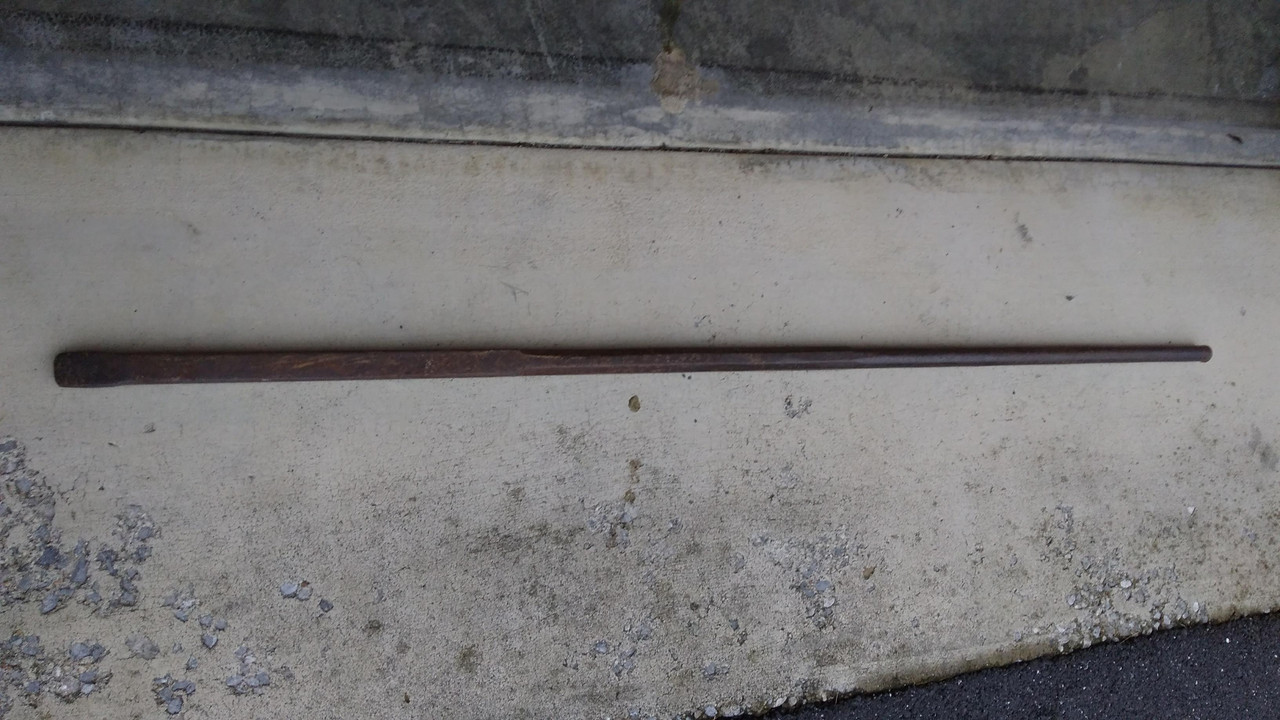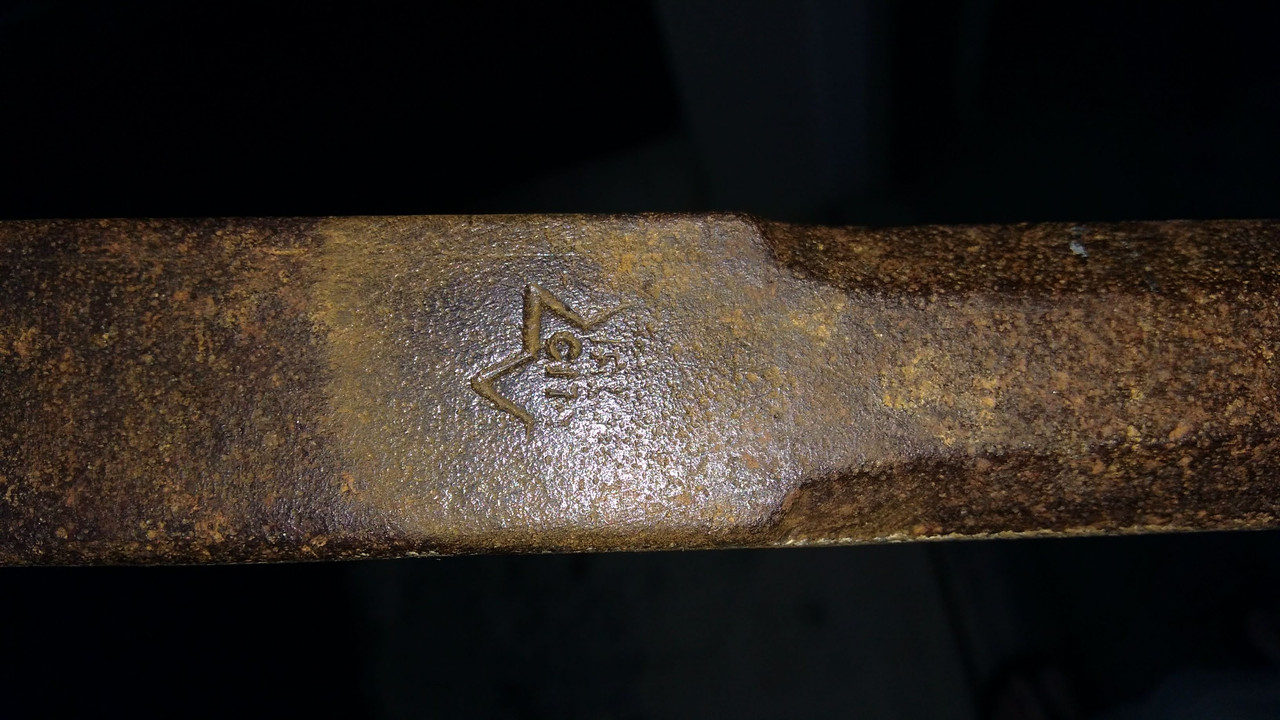If this tool is too far off topic, I apologize and will understand if the thread is removed.
lblyttle's latest haul included a bar that reminded me of a large old bar that was my grandfather's. I got to thinking, I wonder if there is a way to identify the maker of the old bar. So I dug the bar out of the corner of the garage and cleaned it off a little and looked for any identifying marks.
First a brief description. I'm not sure what the correct name is - wedge point lining bar or crow bar or pry bar. Its a little over 60" long. Starting at the point, the first 18" is square and 1 1/4" across, the next 17.5" is octagonal and 1 1/8" across, and the final 25" is round tapering to 1"diameter. It weighs 19lbs on my bathroom scale.
I was able to find the following marks on it. on one of the flats it's stamped
S C S 9 2
the 2 is stamped much much deeper than the other numbers, and may be a different style.
the S C S 9 stamps are pretty fine and not all that close together.
Then opposite the deep 2 stamp is what may supposed to be a six sided star. I couldn't make out any of the words within the star until I looked at a picture I took of it, and the last word might be CITY.
anyways, if anyone knows anything about this cool old tool, I'd love to hear about it. It certainly is a beast.



lblyttle's latest haul included a bar that reminded me of a large old bar that was my grandfather's. I got to thinking, I wonder if there is a way to identify the maker of the old bar. So I dug the bar out of the corner of the garage and cleaned it off a little and looked for any identifying marks.
First a brief description. I'm not sure what the correct name is - wedge point lining bar or crow bar or pry bar. Its a little over 60" long. Starting at the point, the first 18" is square and 1 1/4" across, the next 17.5" is octagonal and 1 1/8" across, and the final 25" is round tapering to 1"diameter. It weighs 19lbs on my bathroom scale.
I was able to find the following marks on it. on one of the flats it's stamped
S C S 9 2
the 2 is stamped much much deeper than the other numbers, and may be a different style.
the S C S 9 stamps are pretty fine and not all that close together.
Then opposite the deep 2 stamp is what may supposed to be a six sided star. I couldn't make out any of the words within the star until I looked at a picture I took of it, and the last word might be CITY.
anyways, if anyone knows anything about this cool old tool, I'd love to hear about it. It certainly is a beast.





